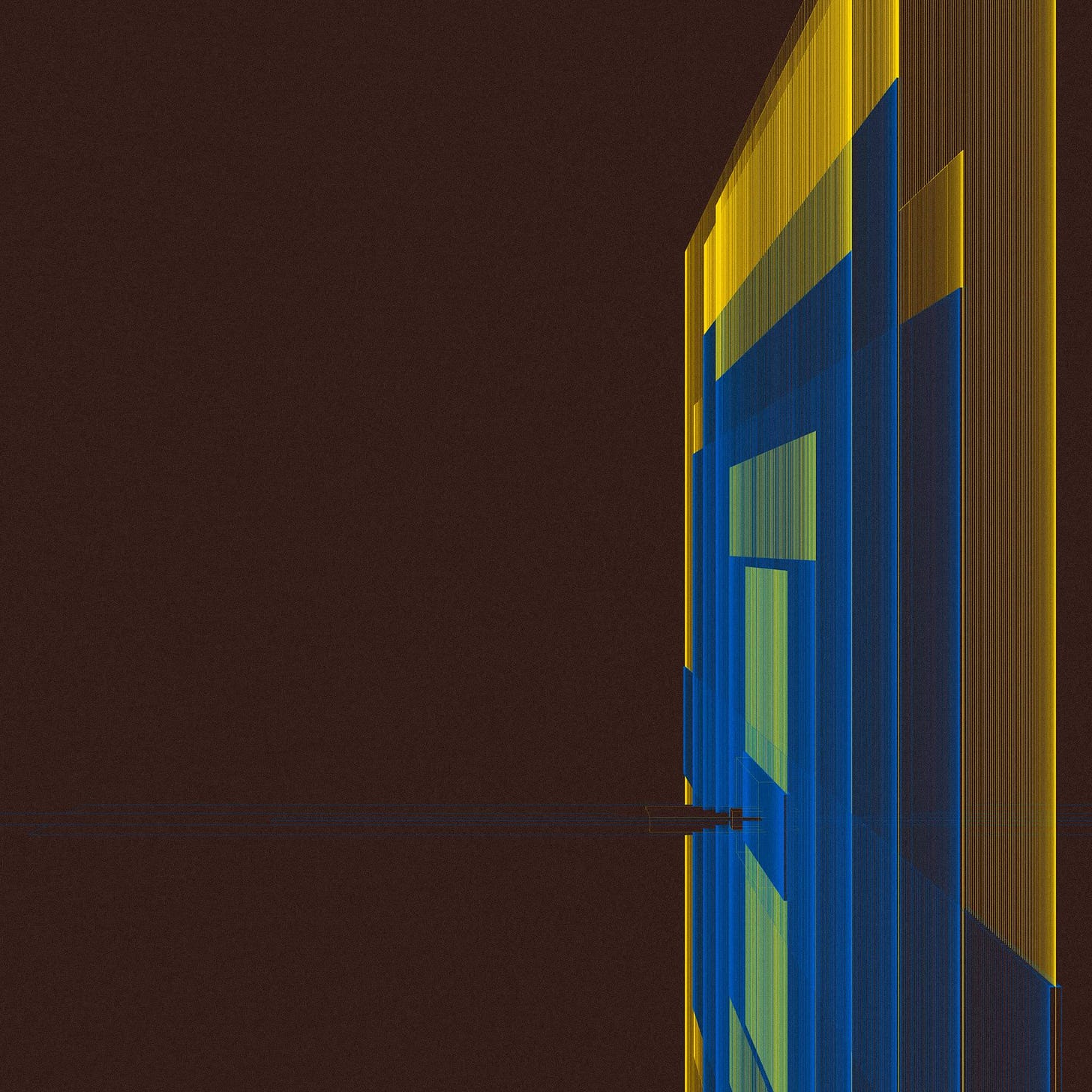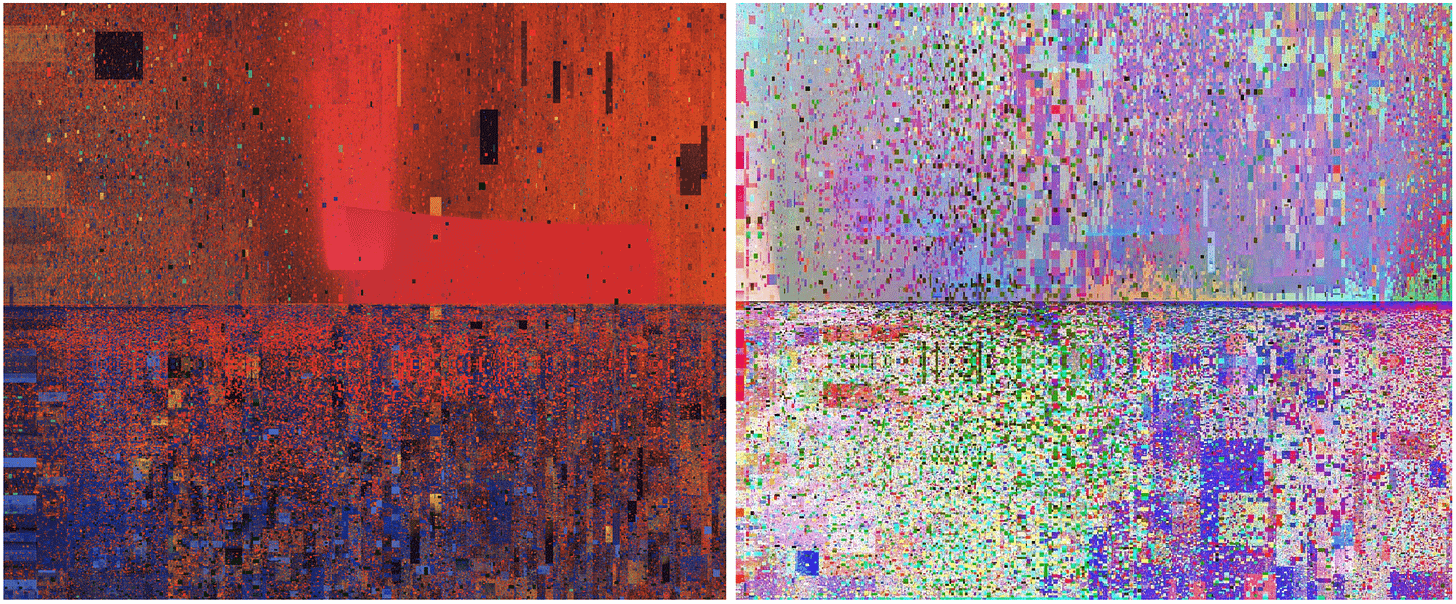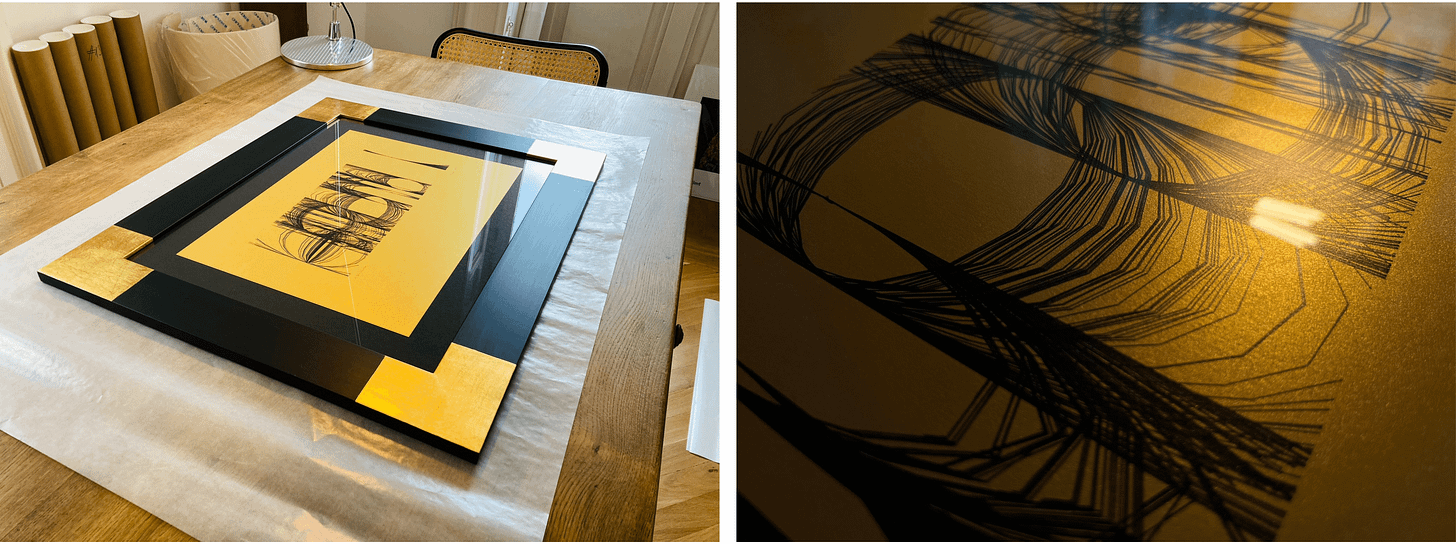Pointline explains how nature (as a creation) is everything for her - generative art is all around us
Generative artist. Can machines make us more human? She is working on that.
Fresh off a blowout release in her collaboration with Zach Lieberman on fxhash, Iskra Velitchkova, better known as @pointline_, isn’t slowing down anytime soon! From showcasing and selling pieces in a major traditional art gallery (Sothebys: Natively Digital 1.3: Generative Art auction) earlier this year, to most recently, helping set the record for overall volume of any series yet, on fxhash. (This one’s “outta here” as we like to say.)
Iskra was someone I started following early on in 2021, when I first collected on the Tezos blockchain. Disclaimer: I currently only own one piece from Pointline. It’s an edition of стена (still available), but am planning to collect many more pieces over time.
Her explorations in the Generative Priroda:
Generative Diopter series:
Emergence series:
and studies into the relationship between machines & nature, really must be seen to understand its importance. I personally fail to find the words to express these feelings.
In regard to horizon(te)s (a collaboration with Zach Lieberman) specifically, I think fellow collector, “🌷a lonliboy🌷”,speaks for us all when they tweeted:

horizon(te)s has broken all perceived notions of "Long Form Generative Art". It challenges us to think deeper, feel deeper, and to dream bigger of what art can be.
Why place rules, when they are meant to be broken .
a lonliboy (@chilltulpa)
Pointline is out of this world! I was able to bring her back down to earth for a brief moment to answer some questions about herself and her art.
Where did your passion for generative art come from?
My career has been defined by data visualization for many years. I started my own project, still at the university, and then I moved to a big financial institution in Spain. I was lucky to be part of a very innovative project at that time, surrounded by some of the best scientists and leaders who gave me the freedom to explore without defined borders.
After years of dealing with data I realized that the most relevant side of telling stories in collaboration with machines was to focus on understanding the algorithms themselves. The way they behave and the responsibility as a society to build them properly.
Understanding how they work, how we do use them to shape our place in the world and how society it’s been driven by them, elicited a strong need to dive into the meanings behind them. I realized also that I wouldn’t be able to do this research with the freedom I needed inside a corporation, and actually without getting in the only space that could give me access to my own latitudes: and that was art. And I quit my job.
I spent a year defining my process and switching from representing results (data) to logic (algorithms). Being not constrained by data, allowed me to explore freely with no other trigger and purpose than the seek of beauty itself.
Can you talk a little bit about how you learned to code?
I must say I am not a coder. I tried for (lots) of years to get the discipline of coding, some structure and formal education, but I just feel I am not this kind of person. Still in the university, as I mentioned before, I co-created a studio for data visualization with a professor. He introduced me to the world of coding, and since d3.js was the main library for creating great visualizations I learned with him the basis of javascript to make my drawings possible. Since then, I’ve always used the same technique: understanding what I want to do and then search for the best tools and languages to do it.
In your own words, what is the meaning of your @handle “pointline_ ?
I am quite obsessed with the minimal shapes and forms and the seek of the pure state of things, so I found fun to call my handle point line. With no other purpose than identifying myself and my practice with these two basic graphic elements. The line at the end was because pointline was already taken :) But as Jack Rusher once suggested: it could also make reference to Point and Line to plane by Kandinsky, a thought that I found so beautiful!
One of the first tweets I remember of yours, that really resonated with me, was your “I see generative” tweets. Since then, it has truly inspired me to look at the world differently, through generative art lenses.

What’s your relationship between generative art and the natural world?
Nature (as a creation) is everything for me. I do believe our only mission in life is to understand why everything around us is so insanely perfect. From this perspective, generative art is a powerful unlocker for many questions. When you define a project and then the project drives you to absolutely unexpected places, besides having to deal with that uncertainty, when it brings somehow life to the screen – I mean, those organic shapes or those reminiscences of something we may have seen in nature– makes me wonder if we could understand certain methods behind the code. What’s behind a leaf? A bird? Why do colors always match in nature? This dialogue with machines fascinates me.
How do you continue to learn new things and innovate when creating?
Nowadays everything goes super fast. Being updated with the last hits in technology, platforms or communities is part of the process for every generative artist. I try to follow as much as I can but it always feels it’s not enough.
I do believe we are facing a whole new paradigm of many things: from the art sphere to the way we interact with each other. This breaking moment makes me feel I want to read about people who lived in changing times. Their histories and approaches to the new help me to have perspective to what is to come.
If you’re not creating art, what else do you love to do in your free time?
Free time? :) Well, I share my practice with my partner so everything is present 24/7. I must say I live and experience my work with passion, so it absorbs my whole time - I actually see generative everywhere :) What I really need is to transit through all this by changing my context quite often. I love to travel, and I try to do it as much as I can. I enjoy spending great time with great people having great food and great wine. Listening to music is something that I also badly need.
Big congratulations for showcasing/selling “Prayers” at Sothebys in New York, recently. I’m so curious to know what you think of the experience. Can you explain this piece a little bit, in detail?
Thank you. Being part of this exhibition was something that exceeded my expectations. When I received the call from Michael Spalter I just couldn’t believe it. Beyond the event itself, the way they approached the show – the meaning they gave to it and the historical perspective – the whole occasion felt something extraordinary. Having the opportunity to visit the exhibition in person and meet so many people that I respect and admire that much was unforgettable.
In your bio you ask the question, “Can machines make us more human?” I understand this is ongoing research, but what can you tell us from your findings so far?
This is part of this dialogue that I mentioned before. Without getting into AI necessarily –since we are probably still far from a true new form of intelligence for now– Machine Learning techniques are all focused on expanding our human capacities. And I am not talking about dealing with lots of information or tons of data, which is great but not the ultimate point. Techniques as Deep Learning are breaking our cognitive spaces into an unimaginable range of spaces and dimensions.
Understanding that we are an infinite amount of realities at the same time means that we need help to process all this information: and here is where machines become present. Why is it so beautiful and enlightening talking with old people? Because they lived a lot. They have many experiences, they know things – they have information. Then, what about being able to gather this unprecedented information?
What if we can process it? I mean, what if instead of making machines more human (we don’t need more of us), we can use them to dive into the really important questions? What makes and drives us human?
I see that you are a participating artist at the Kate Vass Galerie “PHYGITAL”exhibition, opening soon. What can visitors expect to see from you that will be on display?
PHYGITAL was a special show for me. Working with Kate Bass Gallery is something that truly means something to me and being part of this physical-digital approach resonates from the first time to me.
Un-distance is a series of 3 pieces displayed as NFTs but also with a plotted work associated. I experimented for the first time with a multilayer drawing. Being subjected to the computational limits and the randomness of some processes brings impressive outcomes that begs the experimenter to question deeply the nature of the results. This project is a game of stages of an algorithm created, through a thoughtful balance of lines, colors and overlaps to evoke a sense of an emergent spring.
To those who are unfamiliar, by definition, Plotter machines are used primarily in technical drawing and CAD applications, where they have the advantage of working on very large paper sizes while maintaining high resolution.
While researching, I came across a tweet from @balon_art who said:
The plotter is one of my favorite components of generative art. Along with the blockchain, it is an ideal medium for gen art exist on.
So well put.
What was your first experience using a plotter machine? Do you remember what you created?
I cannot remember the first time I saw a plotter machine working but It should have been in some exhibition years ago. I got my own machine a few years ago and I began experimenting with it actually as a proxy to draw generative pieces on clay. That never happened since I haven’t been able to find the time to go further with this project, but instead of this I became obsessed with the machine. Sometimes it’s like the best therapy to get some fresh air and a pause from the speed of the digital world.
What could the evolution of the plotter machine look like in the future, or do you think this form of drawing will always be relevant?
I believe so. The magic of the plotter is that it’s physical but also that it’s not perfect. We don’t deal well with perfection I think. If I had to digress what could be the future of plotter works, that would be first all: they will be present in the movement, but also we may face a new generative approach. I mean, connecting plots to long form projects - creating ways to plot outputs in real time could be something that I would be interested to see.
The hottest and most sustainable NFT platform for generative art is fxhash (imo) and one of the hottest collections is none other than “Uninhabitable” - Published on December 17, 2021. “A generative system built only from ellipses.” I’m obsessed and equally fascinated with every output. Some with complex chaos, others with simplistic beauty. Each output is beautiful in its own unique way. And like a fine wine, its visual value appreciates every day.
What are some elements you used to create this code?
Everything is made by ellipses in this project. I played with different transformations to achieve different environments.
What made you decide to publish this series?
When fxhash appeared I was working on two exhibitions so I couldn't join the early party and It really felt I was missing something relevant. Once I finished my work, I decided to release something. My only wish was to present myself with something very personal. I decided to recreate these different stages or ecosystems by playing just with strokes and adding the red “fog” in some of them but not playing with colors or other elements. Although it’s called uninhabitable, it feels home to me :)
How did you know it was ready?
At the moment I tried to add more elements. It suddenly became something else, and I got back to the initial point, that was the idea and I wanted to keep it like that.
How do you feel about the response you’ve received since it’s been released?
And I am very thankful for the response of the people. I thought it could be too minimal, too lack of color, but I really wanted to express myself honestly and without thinking on any metrics. fxhash it’s an extraordinary place for experimentation and innovation, and this is a perfect playground for expression.
Do you have any particular rituals or places to go to get inspiration when looking for new ideas?
I can say I live at my terrace. I need fresh air to work, good weather and if it’s possible seeing the sky.
Do you consider curation an important aspect of showcasing art? Do you consider yourself a curator?
I see this open space today for everyone to show and express as something very positive. Still, stories are always needed to connect concepts. I find really inspiring the broad scope of opportunities for getting in touch with new people, great artists and collaborations. That needs for sure curation and strong profiles who really know how to establish a dialogue between art and technology.
What’s your opinion about the overall state of NFTs and how the world currently perceives this technology?
I just feel that NFTs are an easy scapegoat for many people. The decentralization as a concept competes by definition with established powers and that’s something that won’t be easy to go through. In terms of art, I really believe digital art has so much to offer and generative in particular is a whole new movement where NFTs are just a channel.
Has there been a time where you’ve run into a bug that you thought you wouldn’t be able to fix or just haven’t been able to solve yet?
Of course :) But there is a different approach to bugs when it comes to art and when it comes to coding digital products. When working on data visualization I had to deal with bugs and face them since that work has a defined goal. In generative art, bugs are sometimes part of the magic. So I definitely have dealt with bugs that had ended up being part of the piece.
What’s one thing you haven’t accomplished yet, that you hope to achieve in your career?
I would like to make a movie one day.
I can only imagine that movie will include generative art in one way or another.
Rumor has it that Iskra is getting ready to release a solo collection before she takes a much-needed vacation. Fingers crossed I have the tez and the timing to secure a mint.
It’s been so inspiring watching artists like Pointline flourish in the NFT community. I look forward to following her in her continued journey in “understanding why everything around us is so insanely perfect!



















I’m just imagining a FIRE movie!